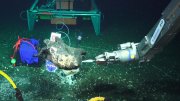Peter R. Girguis is a professor of organismic and evolutionary biology at Harvard and co-director of the Harvard Microbial Sciences Initiative. His research focuses on how marine organisms survive and thrive in the ocean, particularly in deep-sea and extreme environments, such as hydrothermal vents. Girguis investigates the biochemical and physiological adaptations of marine microbes and animals, including symbiotic relationships and responses to environmental change. His lab combines molecular and geochemical techniques with new technologies to advance the study of marine life.
1) What do you research and teach at Harvard, and what drew you to this field of study?
We study the ecology and biochemistry of marine animals and microbes. We are deeply interested in the different biochemical adaptations that give them an ecological advantage in their environments (for example, animal enzymes that can protect them from toxic metals or microbial enzymes that can harness energy from minerals). By studying how they “make a living” in the ocean, we better understand how they respond to natural and anthropogenic (human-caused) change. In addition, we sometimes discover new enzymes and capabilities that are of commercial interest, potentially leading to new battery technologies or methods of carbon capture.
Our research is, in no small part, enabled by our skills in engineering high-pressure aquaria, underwater chemical analyzers, and microbial/water samplers. We use these tools to study marine organisms in the field (in situ) or in laboratory aquaria that simulate their natural habitats. Studying living organisms allows us to ascertain their metabolic capabilities. For example, how do they biochemically respond to changing foodstuffs or increased seawater acidity? These questions can only be answered by studying living specimens and are most informative when studying them in the conditions they experience in nature. We also sequence their genomes to understand their genetic potential. Those genomes are like the blueprints to a car: they reveal much about the inner components of each organism and their overall “potential.” We use that information to design our experiments. However, genomes do not tell us about their “performance.” That is where our life-support systems and sensors come in handy: these tools let us directly measure the metabolic activity of organisms so we can see how they biochemically respond to their environmental change and how much energy they expend to cope with that change. For example, through these kinds of experiments, we’ve recently learned that bivalves, such as deep-sea clams, as well as coastal oysters, are incredibly resilient to environmental change, and we’ve discovered that particular microbes likely play a role in conferring resilience. That said, we’ve also found that many deep-sea organisms are extremely vulnerable to any changes in their environment. Such data help us understand which organisms are resilient and which are less so. This information is valuable to many communities, from research scientists to resource managers to aquaculture companies.
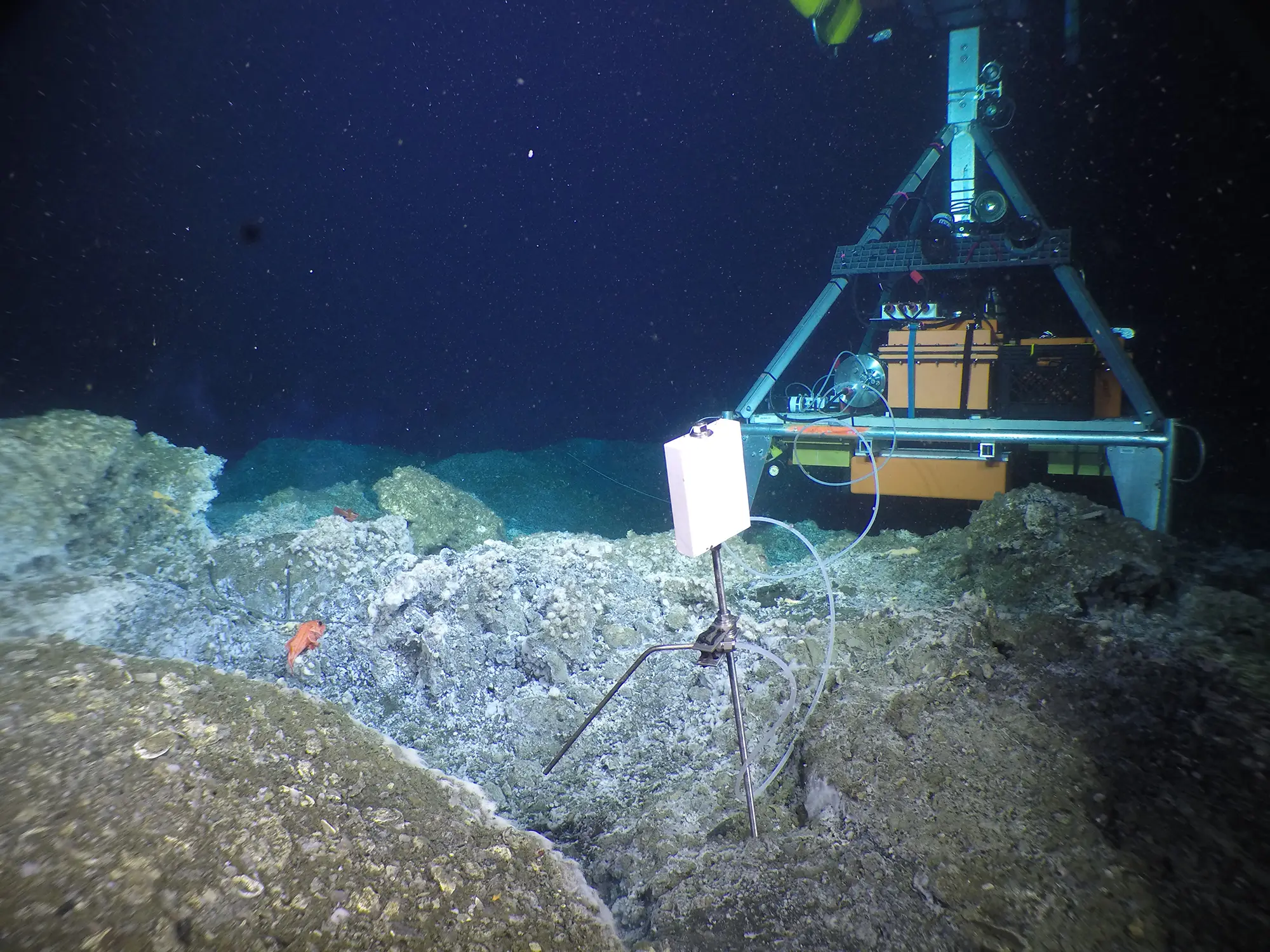
As for what drew me to this field, it’s this: we live in an ocean world and to best understand life on this planet, you need to understand the ocean. The ocean has shaped the evolution of all life on Earth and has shaped human history since the dawn of time. As an undergraduate, I took many courses across a diversity of fields, including history, literature, and science. The ocean science courses, though, had me hooked because they touched upon all those areas. I knew then that I wanted to be a part of exploring and understanding the ocean, including how the ocean has shaped humanity.
Today, in my undergraduate course on deep-sea biology, I introduce students to the life in the deep sea, the history of humankind’s exploration of the ocean, and how we engage with the ocean today. The students who take my class come from all across the University and from our neighboring institutions. Our classroom is so much richer for having a diversity of perspectives and backgrounds. In my first-year seminar on sea monsters, we explore the history of sea monster lore and unpack the meaning behind many of the sea monster stories from around the world. It is, in essence, a course on critical thinking in which we use sea monsters as a vehicle to discuss humankind’s relationship with the ocean (as well as our greatest fears).
2) Your research examines the unexplored parts of our oceans. What’s one discovery from your time studying deep-sea microbes that fundamentally changed how you think about life on Earth?
I can’t help but share two discoveries that changed how I think about life on Earth. First, there’s the story of the hydrothermal vent tubeworm Riftia pachyptila. This worm lives around deep-sea hydrothermal vents that emit noxious, toxic gases, such as hydrogen sulfide. Riftia has no mouth, gut, or digestive tract. In lieu of eating, it hosts up to 100 billion bacteria deep inside its body, bacteria that can harness energy from sulfide (a chemical found in the vents) and use that energy to produce their own “food” just like plants do. Sulfide, however, is toxic to animals, but nevertheless Riftia evolved the biochemical tools to deliver sulfide to the bacteria. They, in turn, provide the worm with all of its nutritive needs. Though this process is similar to plants, this symbiosis makes its own food in complete darkness. Amazingly, the worm and their symbionts are one of the fastest growing creatures on Earth, outgrowing all but the fastest growing plants! Today we are working with colleagues to see if we can coopt this microbe’s speedy metabolism to produce high-value compounds from waste streams, such as wastewater or power plant gases.
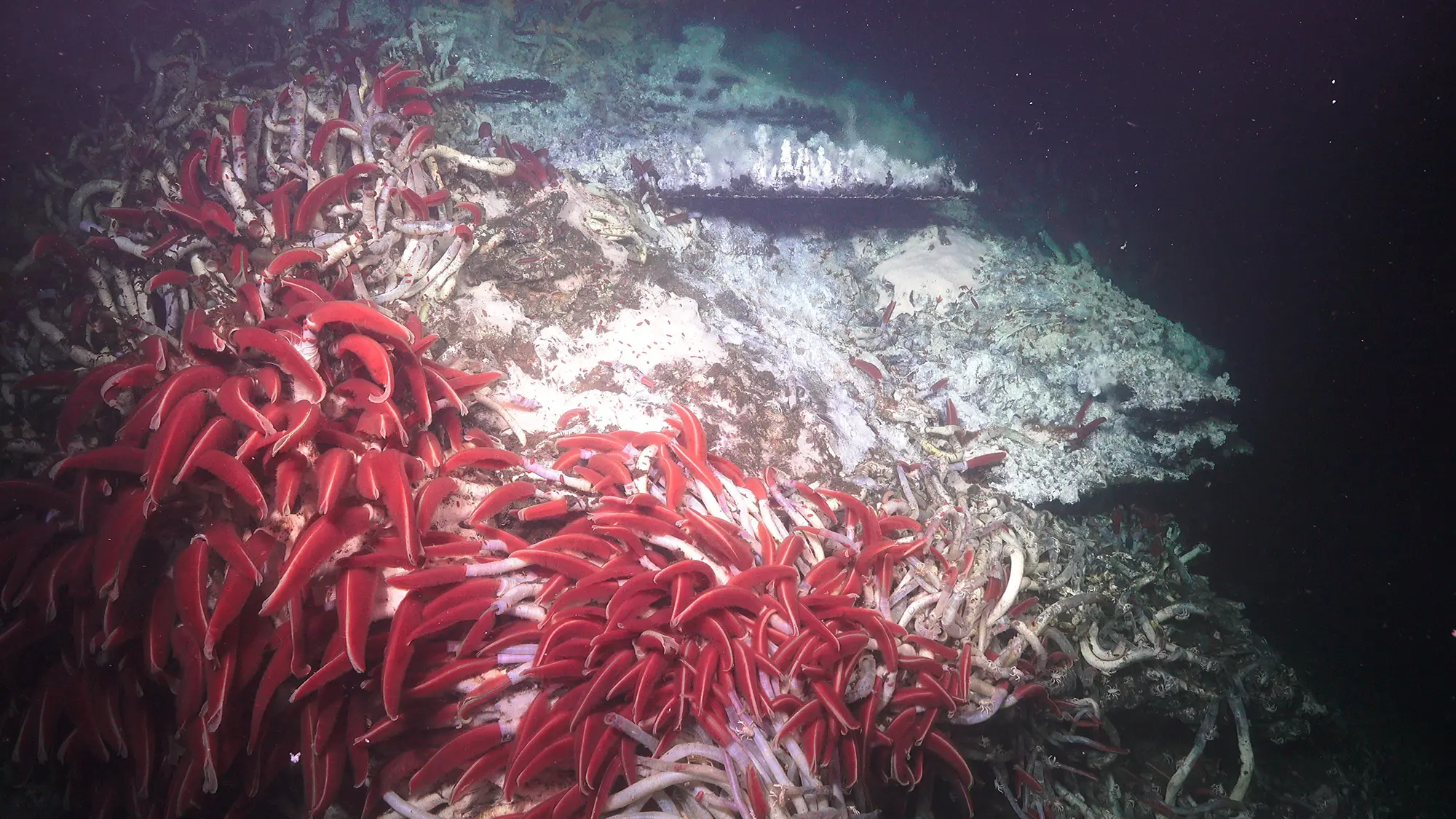
The second discovery that rocked my world, if you will, was finding new microbes that could “breathe” minerals. These microbes live in deep-sea sediments that are devoid of oxygen. These sediments are often replete with iron oxides, or rust. Over the last 20 years, I’ve been studying microbes that use rust and other mineral oxides in lieu of oxygen. How they do this, biochemically speaking, is awesome. In our cells, for example, we have to bring oxygen into our mitochondria so it can accept electrons that we strip off our food and generate the power needed to keep us alive. These microbes, however, can tap into rust and other compounds that are outside the cell, and use them to accept electrons instead of oxygen. This is, biochemically speaking, amazingly cool because it allows the microbes with that biochemical capacity to “breathe” minerals that are inaccessible to everyone else. Imagine being able to breathe by pressing your hands to a piece of rusty metal! In addition to discovering new microbes that can breathe rust, we’ve also learned how to harness electrical power from these microbes using “microbial fuel cells.” Put simply, we stick a conductive electrode in the oxygen-free mud and trick the microbes into thinking it’s iron. These “microbial fuel cells” generate electrical power on the seafloor without relying on sunlight, currents, or anything else, and we’ve used them to build seafloor “wireless sensor networks” that are powered solely by the microbes. It’s a great example of how humankind can learn lessons from nature and put their tools to use in addressing some of our challenges.
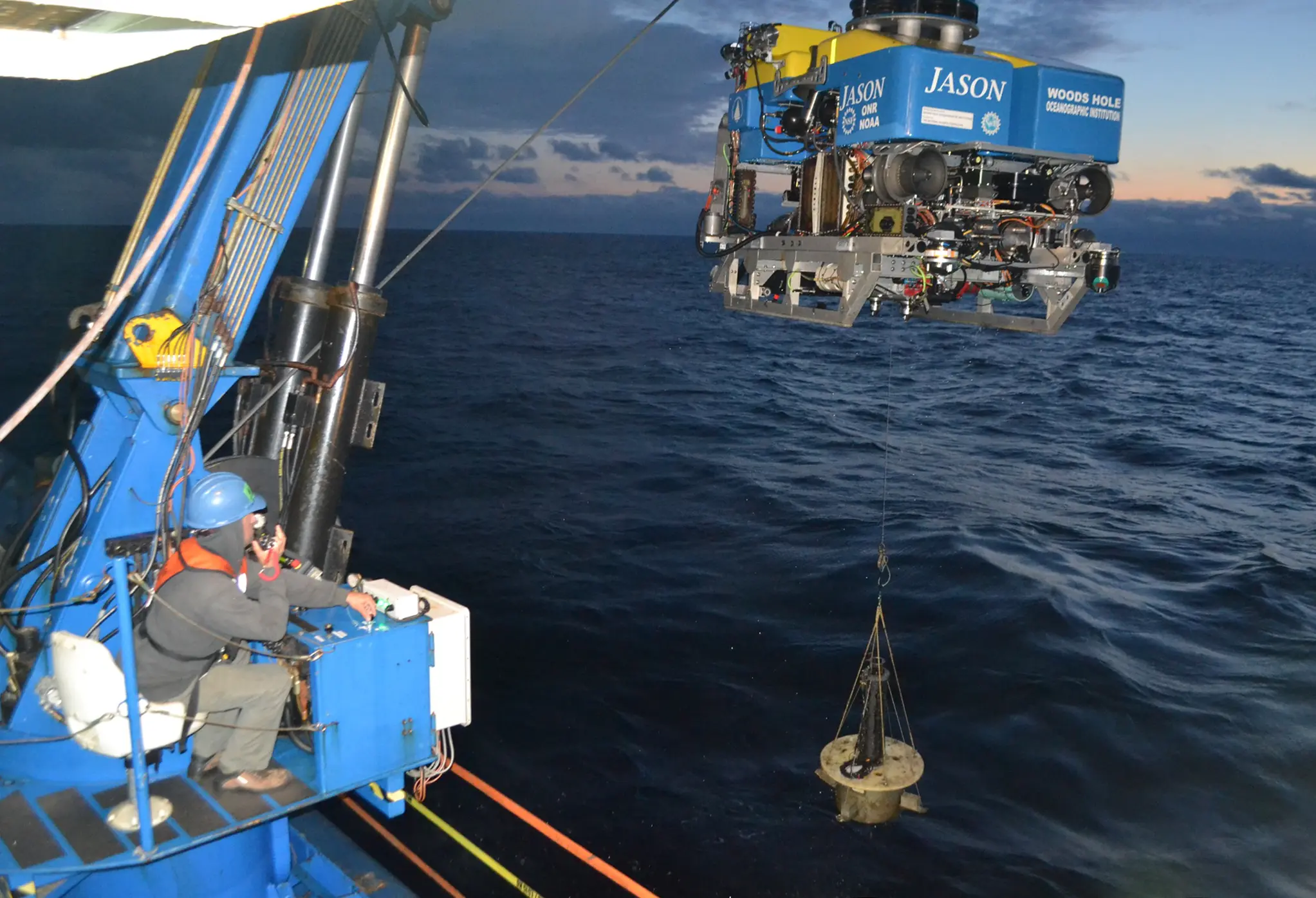
3) Your lab has contributed to the development of tools that allow scientists to better study microbes in their native environments. What’s one tool or method your team has developed that you think has had the most impact on the field, and why?
Our underwater mass spectrometer is one of our tools that has broadly impacted our community. One of our community’s biggest challenges is measuring dissolved gases in the deep sea. We usually have to collect a discrete sample of deep seawater in a gas-tight container, then analyze it on the ship. That’s a lot of work for one sample. As a postdoctoral scientist, I started wondering if we could put a mass spectrometer in underwater housing and use it to make hundreds or thousands of measurements on a single deployment. Mass spectrometers are powerful, high-performance chemical sensors, but they are usually restricted to the lab because they are sensitive and heavy. We designed and developed ours around a small, robust instrument and built a sample inlet that allows us to work down to depths of 4 kilometers (about 2.5 miles) and temperatures up to 250 degrees Celsius (about 485 degrees Fahrenheit). We use it to quantify dissolved gases that are important to animals and microbes (and industries), including oxygen, carbon dioxide, methane, sulfides, hydrogen, and more.
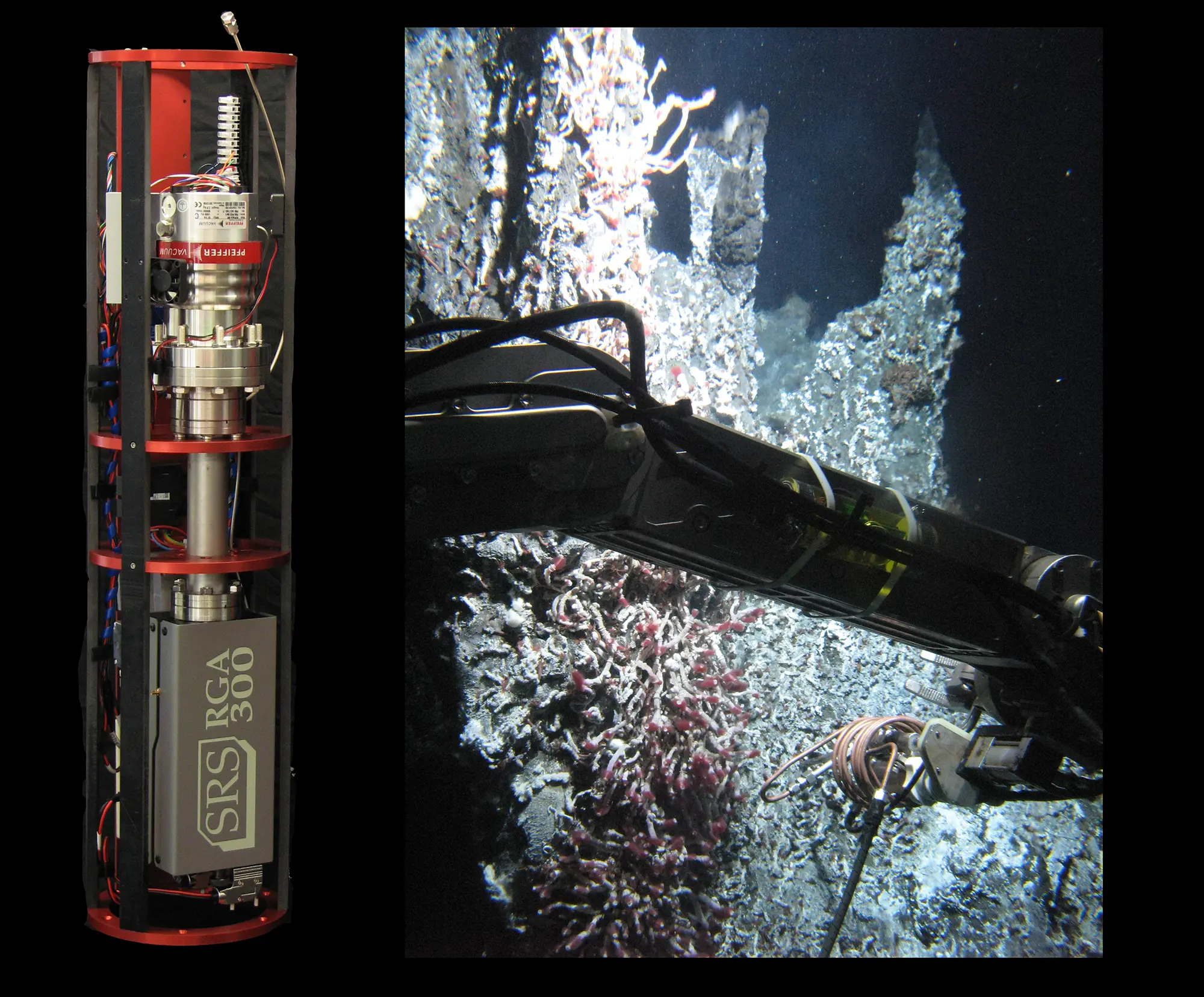
Equally important, I designed this instrument to be “open source” so that it was accessible to the broader community. That’s why it has been so impactful: colleagues, institutions, and companies around the world have built their own versions of our mass spectrometer. I am very pleased about this because I believe we should look for opportunities to make the results of publicly funded research broadly available to the wider community. The mass spectrometer illustrates how a relatively modest investment of support from the federal government and philanthropies can provide long-term scientific and commercial value.
4) What do you and your colleagues and students do at the Microbial Sciences Initiative?
The Microbial Sciences Initiative (MSI) was founded nearly 20 years ago by colleagues across the University. MSI’s mission is to catalyze interactions among microbiologists at Harvard and across New England. In 2019, Dr. Michael Gilmore [Osler professor of ophthalmology at the Harvard Medical School] and I were asked to be co-directors, and since then we have been working to create even more opportunities for engagement. We host two annual public meetings where we hear from leading microbiologists as well as science artists. We have a “fermented food festival” that showcases some of the many foods that microbes help make, from bread and butter to chocolate and coffee.
Microbiology touches all our lives, so we welcome any and all members of our community to join us. To spread the word, we visit students in their classes and invite them to join MSI. We run a paid summer internship program that provides students with a chance to work in world-renowned labs. We oversee a microbial sciences secondary concentration, and many former students have had opportunities to intern at leading Boston-based hospitals and biotech companies. We even offer “open door” group study times where any student on campus can attend and ask MSI staff for help with resumes and the like. In short, MSI is a community that welcomes any and all who recognize the importance of microbes and are looking for a place to call their intellectual home.
5) Deep-sea hydrothermal vents are teeming with microbial life adapted to extreme conditions. What can these ecosystems tell us about the possibility of life beyond Earth, particularly on ocean worlds like Europa or Enceladus?
Microbes have been on Earth far longer than any animal, including humans. Over time they have evolved many extraordinary capacities, enabling them to live in environments that would kill us in an instant. There are deep-sea vent microbes that thrive at temperatures over 120 degrees Celsius (230 degrees Fahrenheit). There are microbes that live in the harshest of deserts with minimal water. Some even grow on the walls of nuclear reactors, unfazed by the radiation that would kill other living things.
When scientists found evidence of liquid water, gaseous hydrogen, and carbon dioxide on some of the moons of Jupiter and Saturn, my colleagues and I got to thinking about the possibility of life on these ocean worlds. We banded together, submitted a proposal, and are now funded to develop a framework to determining whether these moons are (or were) habitable. It’s one of my favorite projects because it brings together microbiologists, geophysicists, geochemists, and technologists who would work together on addressing one of humanity’s grand questions: is there life beyond Earth?
Earth’s hydrothermal vents are, to a limited degree, analogs for what might be found beneath the ice on Europa, Enceladus, and other ocean worlds. We are studying the biophysical and biochemical limitations of living cells. We are also studying how much energy it takes to manage extreme physical or chemical stresses. Our job, in essence, is to use what we’ve gleaned from life to Earth to place some hard boundaries on where life can survive and then consider what kinds of microbes might survive in these environments. It’s not easy because Earth is extremely different from these ocean worlds, so we have to be very careful about our assumptions. In particular, I believe we need to pay extra attention to how much energy (in the form of microbial foodstuffs, if you will) is available on these ocean worlds. This is one of our most difficult and important challenges. Estimating how much energy and matter is needed to sustain a viable population of microbes over evolutionary time scales, and estimating if there’s enough energy on these ocean worlds to do so. It’s one thing to consider what conditions microbes can survive in; it’s something else to consider what conditions are needed for microbes to evolve.
